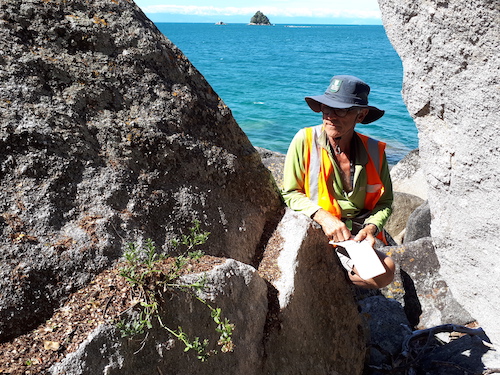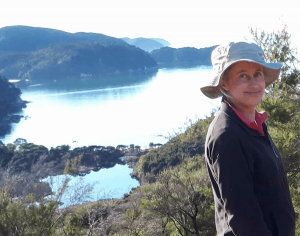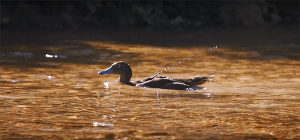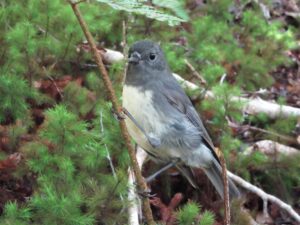Check out the word persistence in the Oxford dictionary and it pretty much sums up DOC’s senior biodiversity ranger Roger Gaskell; ‘the fact of continuing in an opinion or course of action in spite of difficulty or opposition’.
A staunch advocate for threatened plants Roger has spent the last 30 years championing some of the lesser known of Aotearoa’s species. He’s credited with helping save coastal peppercress (Lepidium banksii) one of the ten most endangered species in New Zealand. Now he’s planning his retirement in 2021 hopeful in the knowledge there are others who will continue his work.
“You don’t realise the value of persistence unless you have been persisting for 20 years and you look back and see you have made a difference,” says Roger.
Surprisingly, Roger didn’t train as a botanist, instead he says his knowledge was gained by osmosis. He acknowledges mentors like DOC’s Shannel Courtney and collegial support from people like Project Janszoon’s restoration supervisor Helen Lindsay.
“In recent years Roger has single-handedly helped save coastal peppercress from extinction. His incredible knowledge and enthusiasm for conservation and getting things done despite the hurdles will be sorely missed,” says Helen.

Roger began his conservation career with jobs like track cutting, hut wardening and even ski patrolling in Aoraki Mount Cook and Westland national parks. It was weeds that brought him to work with plant species, he did some summer weed surveys in South Marlborough back in 1988. Other than a couple of year off he’s been working for DOC ever since.
Roger says remnant habitats and species are often overlooked and forgotten and they need advocacy and championing to hold their own. “I used to feel isolated and lonely. When I first started working in the Abel Tasman there was no biodiversity work going on and peppercress was on the brink of extinction. I feel hopeful now that there is knowledge and there are people who are hungry to learn.”
Coastal peppercress is one of his most loved plant because of where he finds it. “I love fossicking about along the shoreline of the Abel Tasman and it’s an absolute treat going to Tonga Island.”
There are other favourites. In particular the fern moonwort (Botrychium lunaria),
Alpine forget-me-not (Myosotis asiatica) and the small-leaved tree daisy (Olearia polita). The Sherry and Hope River catchments are the national stronghold for the tree daisy and for 15 years Roger has worked with landowners with covenants now protecting the three best tree daisy populations in the Sherry / Wangapeka basin.
“I’ve had a long connection with the site and got to know the landowners. Now there are some spectacular regenerating plants and the landowners are really appreciative of the work we do there. It’s a little example of what persistence can do,” says Roger.
Roger has also been the catalyst behind the formation of many restoration groups, providing advice and help. He shoulder tapped locals to form the Otuwhero Trust and has worked for years with the NMIT trainee rangers to restore the Eves Valley Scenic Reserve which miraculously survived the Pigeon Valley fires.
“There are really important little taonga habitats that need a local team of champions. It’s just so fantastic how people have taken things on,” he says.
Bringing people together to protect threatened native plants is one of Roger’s unique skills says DOC Motueka Operations Manager Chris Golding. “Roger has a great eye for opportunities to connect people with a common goal of restoration. He has a life time worth of local knowledge, which will be hard to replace,”
Roger calls himself a temporary custodian. He’s a custodian who has given so much and he will be sorely missed when he retires next year.



